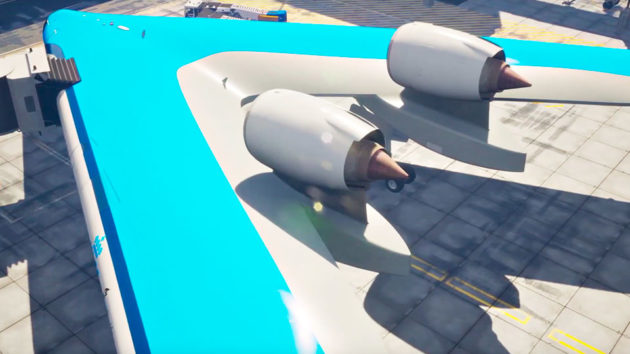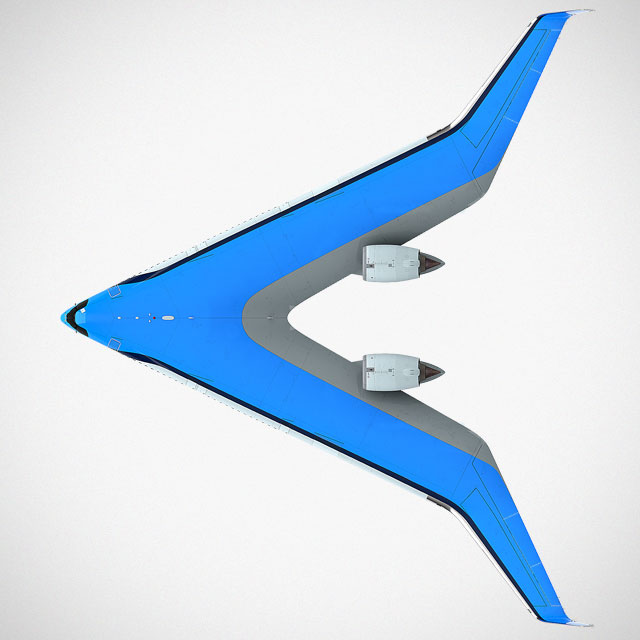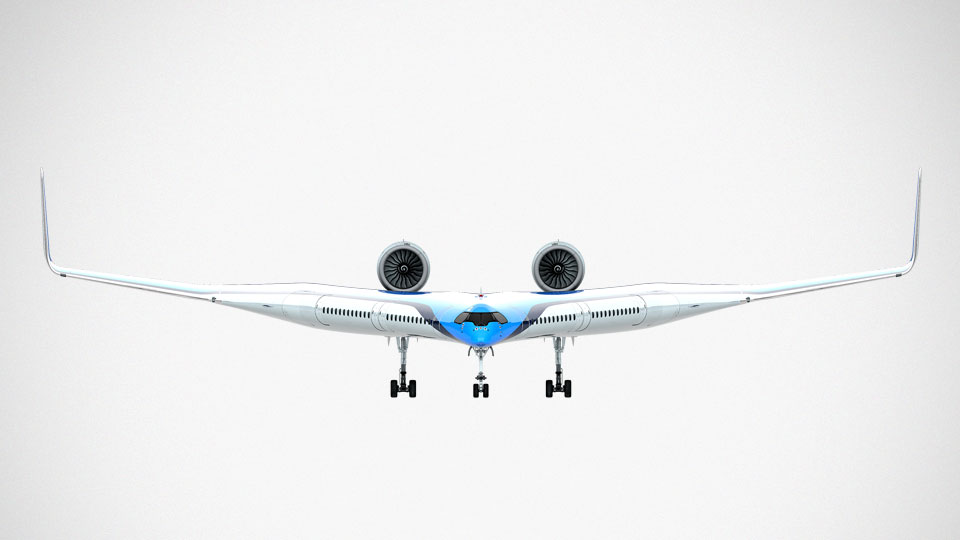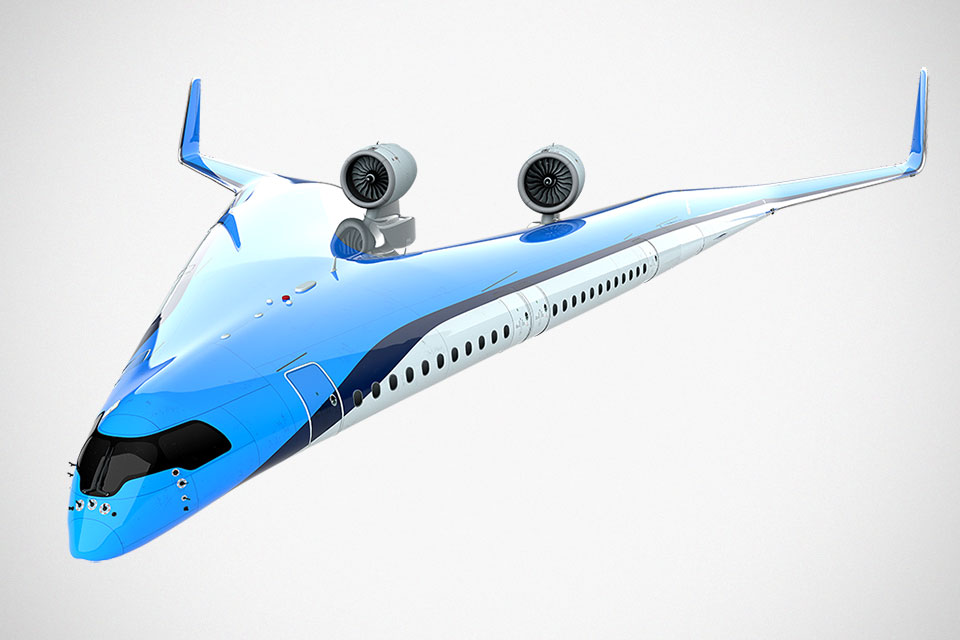An aerospace engineering team over at Delft University of Technology (TU Delft) seems to think that passenger jet needs a radically different design. The team has came up with a somewhat odd-looking aircraft called Flying-V which, you may have already have guessed, is literally named after the aircraft’s shape. It is bold design that envisioned the entire aircraft is the wing.
Technically, there’s no fuselage to talk about; the passenger cabin, cargo hold and the fuel tanks are all integrated into a giant wing structure. Despite the radical shape, the Flying V is no longer than an Airbus A350 and has the same wingspan which, theoretically, should allow it to use existing passenger boarding bridges, runways, and even hangars.
More importantly, it will be able to carry the same number passengers – 314 in the standard configuration, and the same volume of cargo of 160 cubic meter (5,650 cubic foot). But why a V-shaped design? Well, because aerodynamic.
DR. Roelof Vos, project leader at TU Delft explains:
“The Flying-V is smaller than the A350 and has less inflow surface area compared to the available amount of volume. The result is less resistance. That means the Flying-V needs less fuel for the same distance.”
The improved aerodynamic shape, along with reduced weight, will result in 20 percent less fuel use compared to the Airbus A350, which is currently one of the most efficient aircraft. The whole idea is to develop a passenger jet that is highly energy efficient over long distances.
The Flying-V was originally an idea of TU Berlin student Justus Benad for his thesis project at Airbus Hamburg. Dutch national carrier KLM a partner and financier of this development. The Flying-V is expected to be powered by “the most fuel-efficient turbofan engines” available today, but in future, it could be adapted to innovative propulsion such as electrically-boosted turbofans.
All these are not paper talk, btw. The researchers will be presenting a flying prototype which will determine if the Flying-V’s stability and reliability at low speeds during take off and landing. This is set to happen in October 2019. Speaking of which, you will be able to see the Flying-V in person from October 3-13, 2019 at the KLM Experience Days at Schiphol Airport.
Images: TU Delft/Studio OSO.
Source: designboom.








